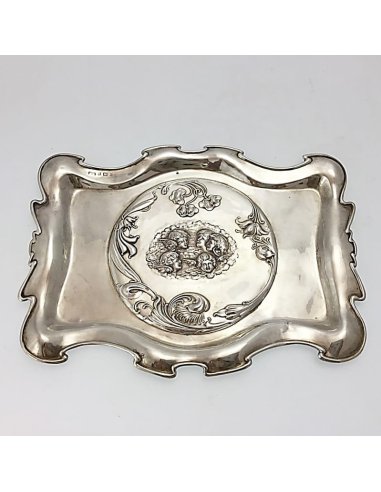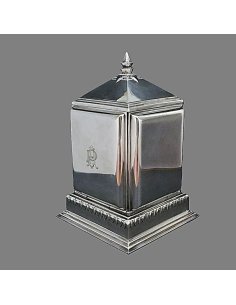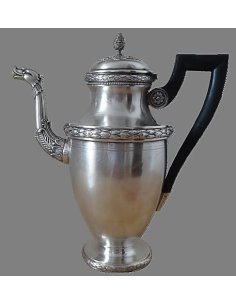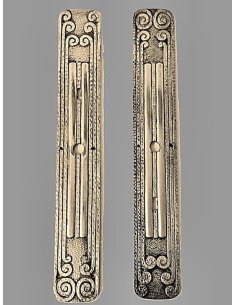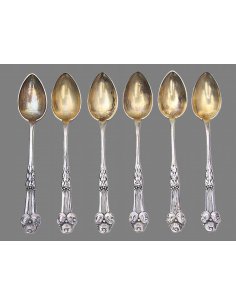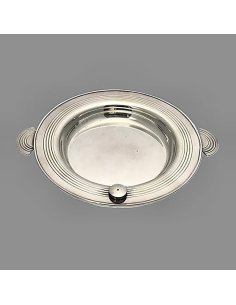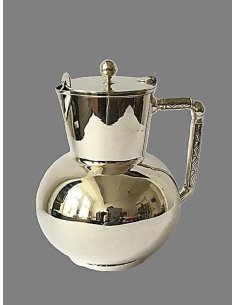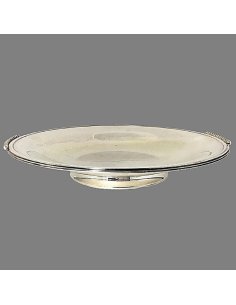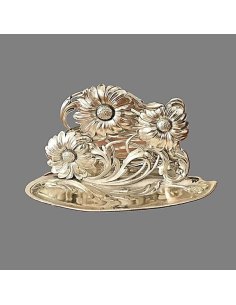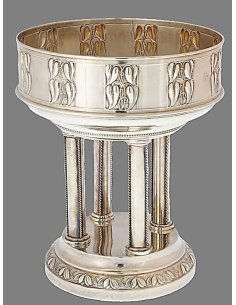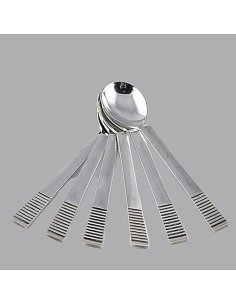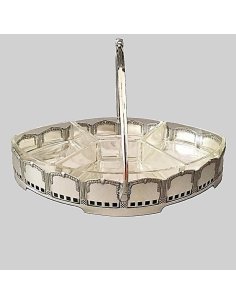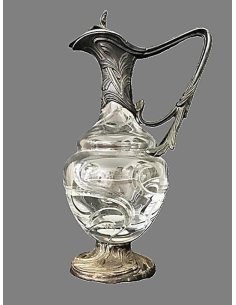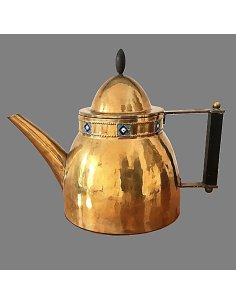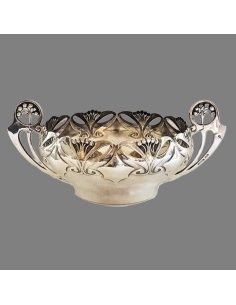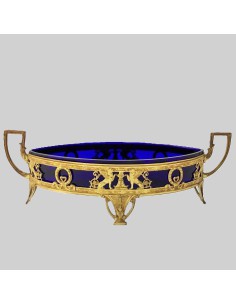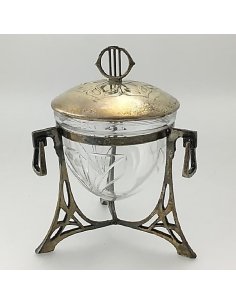English Sterling Silver Tray by W. G. Keight, Birmingham 1904
Rectangular tray with slightly concave sides and an outward-flaring rim. In the center, an oval medallion finely engraved with five winged cherub heads (putti), surrounded by delicate foliate and floral scrollwork.
The tray is a representative example of English silversmithing from the transitional period between the late Victorian and Edwardian eras. Its form and ornament reflect the aesthetic taste of the time – a synthesis of classical figural motifs (putti) and naturalistic botanical decoration. Such pieces served both as elegant tableware and as expressions of refined domestic culture.
Hallmarks and Dating
British silver is marked with a set of standard hallmarks that indicate origin, silver quality, and year of assay:
- Maker’s Mark (WGK): the manufacturer’s mark, here for W. G. Keight.
- Assay Office Mark: for Birmingham, typically represented by an anchor.
- Lion Passant: the symbol for sterling silver (925/1000).
- Date Letter: a single letter in a specific typeface identifying the assay year — in this case, the letter “e,” corresponding to 1904.
About the Manufacturer: W.G.Keight
The maker’s mark WGK refers to W. G. Keight (later also known as W. G. Keight & Co.), a silversmithing firm based at Spencer Street, Birmingham. The mark was first registered in April 1883 with the Birmingham Assay Office. During the late nineteenth and early twentieth centuries, Birmingham was one of the principal centers of English silver and jewelry production, home to numerous workshops and manufacturers producing both decorative and functional silverware.
Objects from this milieu are characterized by precise craftsmanship, clearly defined hallmarks, and a balanced combination of ornamental engraving or relief with practical form. The maker’s mark together with the date letter allows a confident attribution to the year 1904.

